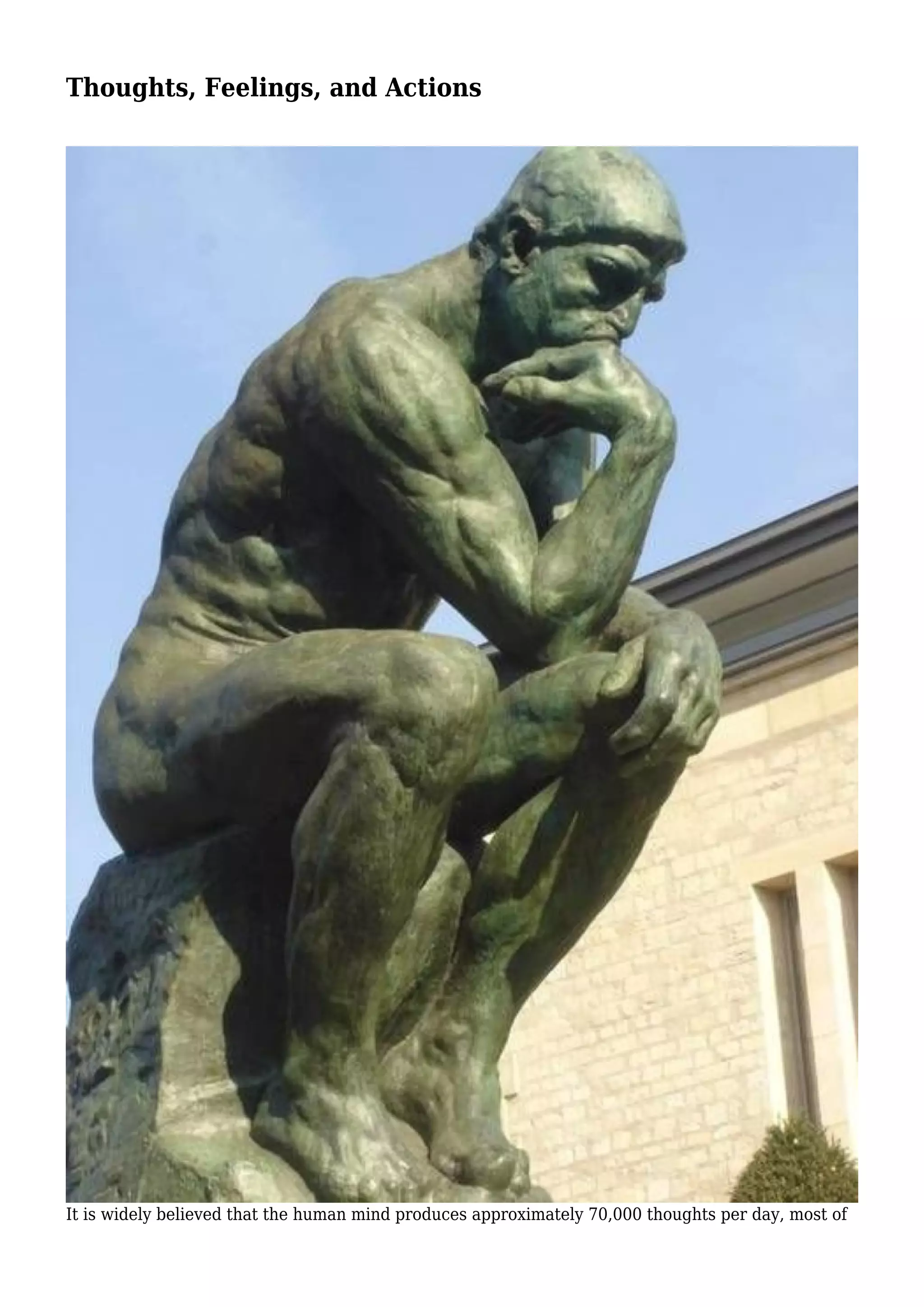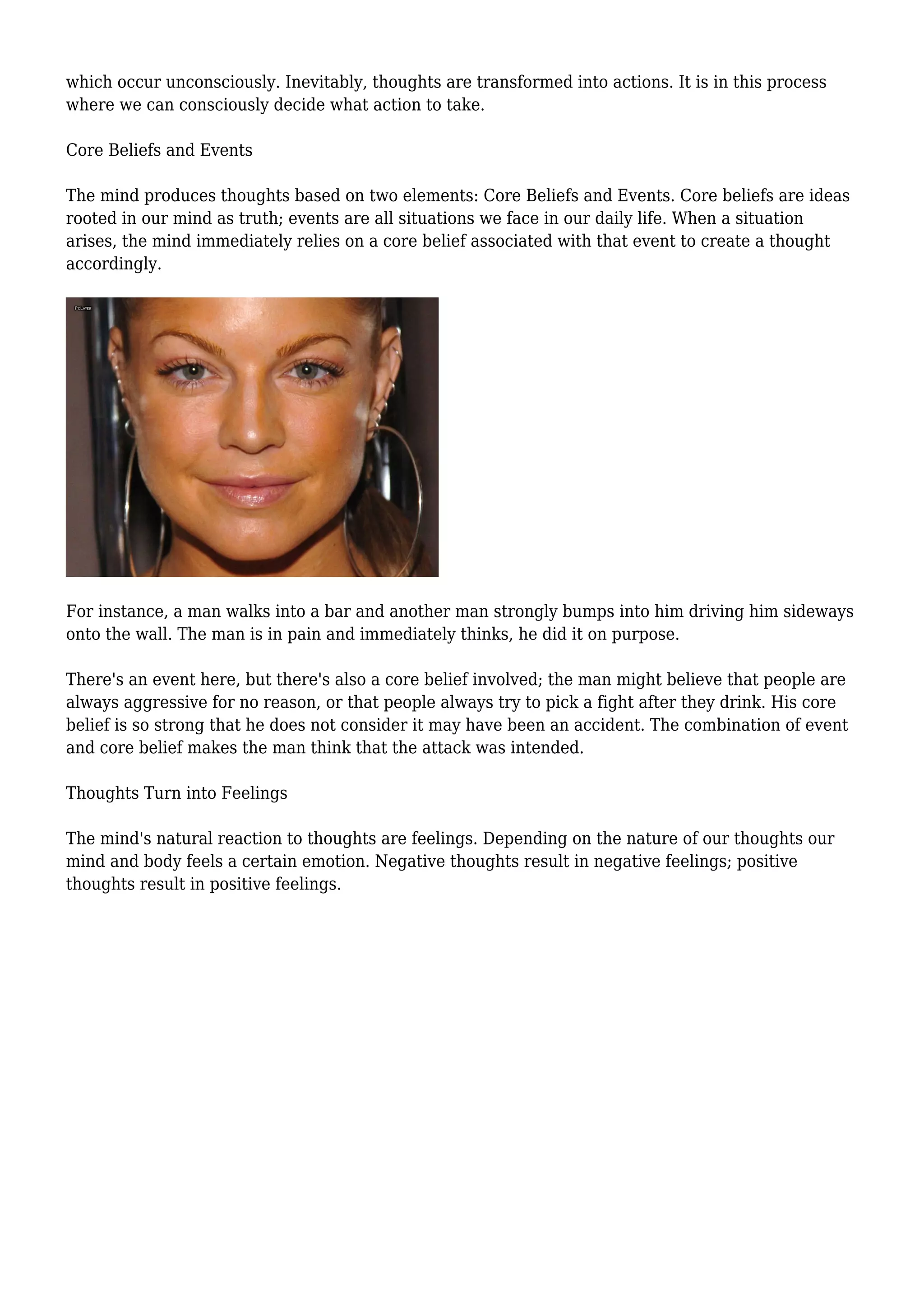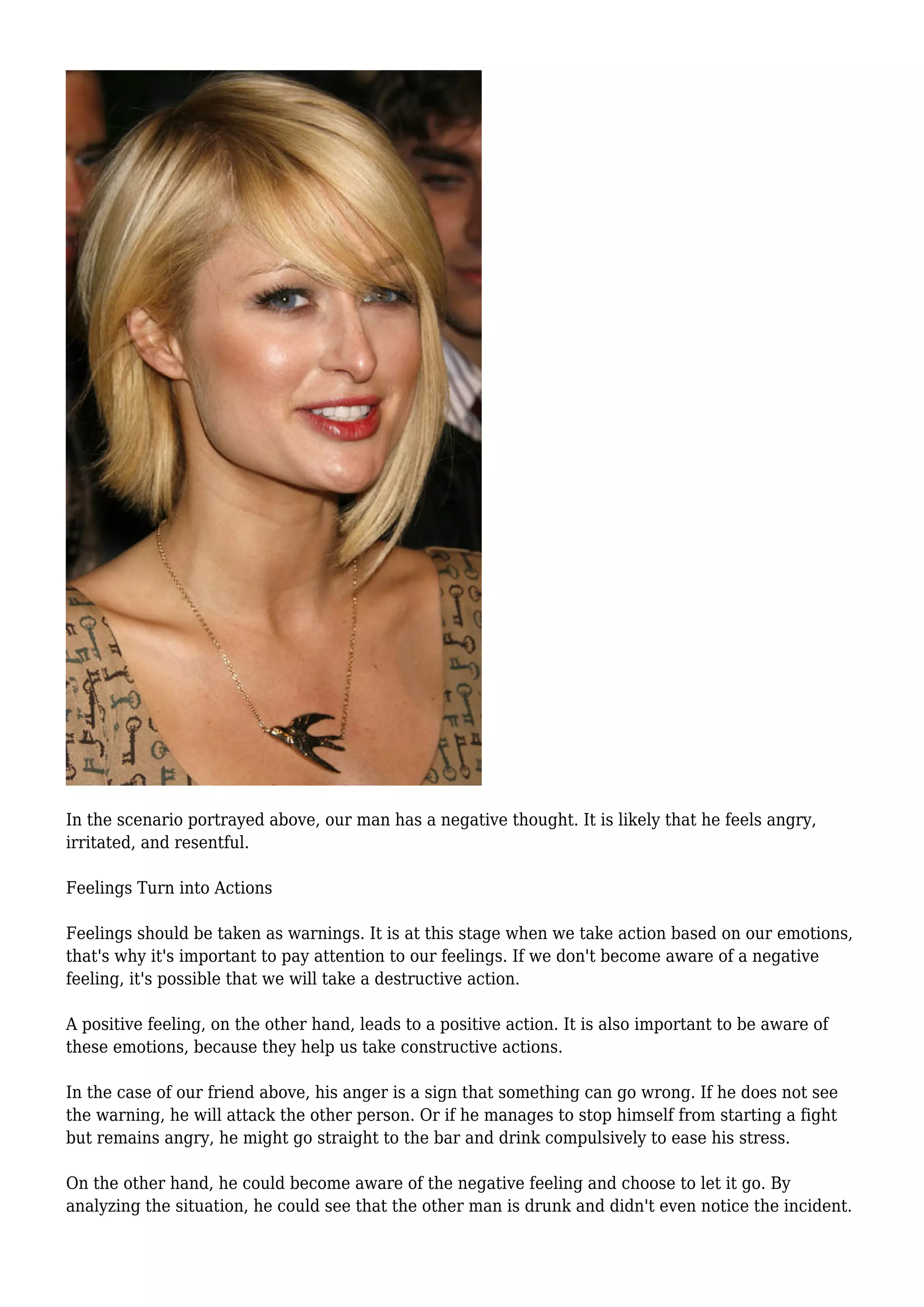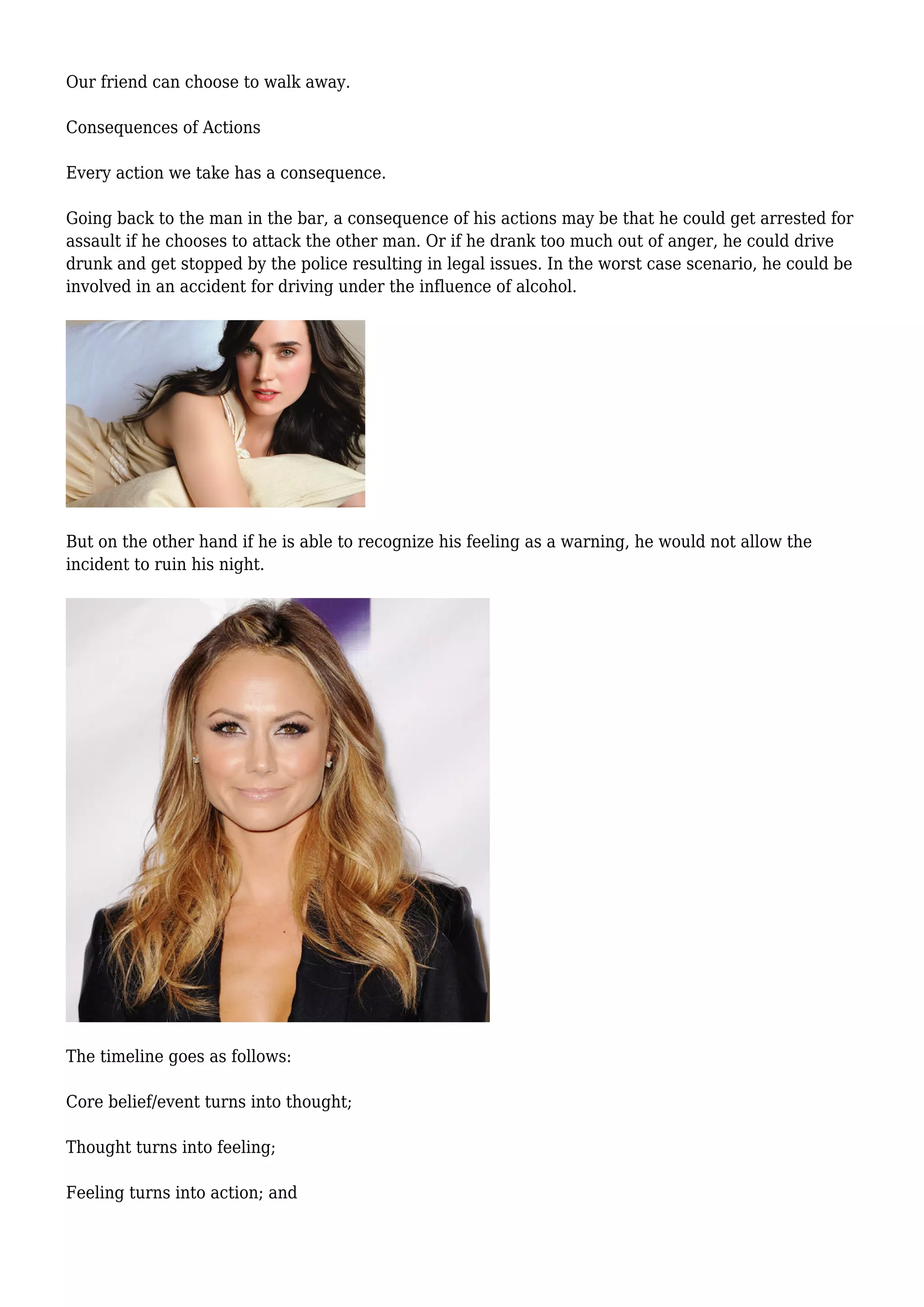The document discusses the process by which thoughts, feelings, and actions are interconnected, highlighting that the human mind produces about 70,000 thoughts daily, influenced by core beliefs and events. Negative thoughts lead to negative feelings and potential destructive actions, while recognizing these feelings can lead to constructive choices. The text emphasizes that actions have consequences and outlines a timeline from core belief/event to thought, feeling, action, and consequence.




